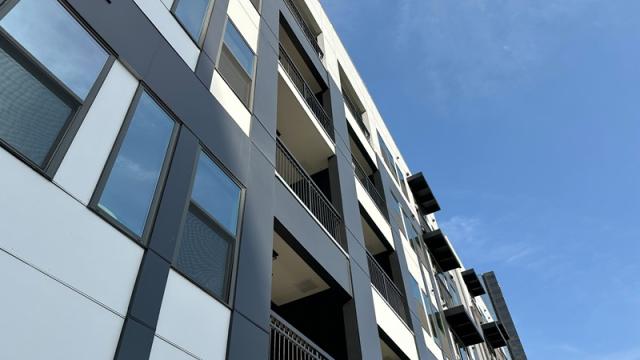
From walkable communities to more automation, apartment owners and operators are eyeing new ways to draw in renters in a tight market. Heading into the new year, here are the five trends drawing the most attention among multifamily decision-makers.
1. Data-driven decision-making

Multifamily owners and operators are increasingly looking to data analytics to guide their strategy. Whether deciding which amenities will draw in more renters or ways to boost their resident retention, multifamily leaders will be shifting away from traditional approaches and towards qualitative research.
In 2025, expect to see data gleaned from property management software playing a greater role in informing operations. For onsite staff, online resident surveys are another popular way to gather stats. As artificial intelligence plays a greater role in property operations, AI-powered tools will help gather and summarize data about renter preferences and behaviors.
2. The rise of mid-rise

The era when garden apartments dominated the market is behind us. In recent decades, the once prevailing garden apartment building has been replaced by mid-rise apartments. With more municipalities incentivizing high-density development, mid-rise properties offer developers a better return on their investment.
Looking ahead to 2025, mid-rise apartments will remain popular among new construction properties. Even as supply drops from a peak of 636,000 units delivered this year, new development in 2025 will continue to be dominated by mid-rise buildings. Of multifamily properties currently under construction, according to CoStar data as of December 2024, there are nearly five times as many mid-rise properties as garden-style apartment buildings.
3. Live-work-play

Often considered the future of urban living, live-work-play communities have been skyrocketing in number and popularity. This mixed-use approach to multifamily can take the form of street-level retail with apartments above. But for developers and operators wary of stepping outside multifamily, it can also look like constructing apartment buildings within mixed-use districts, where residents can easily walk to nearby shops, restaurants, and entertainment.
As demand for city living remains strong post-pandemic, apartment communities that offer the best of city life — combining residential living with urban amenities — will draw renters willing to pay a premium.
At the same time, a growing number of cities are expanding their mixed-use zoning. From Atlanta to Minneapolis, a rise in zoning reform is creating new opportunities for multifamily owners and operators. This approach to zoning encourages high density housing, especially along transit corridors.
4. Automated property management

As artificial intelligence grows more convincing and effective, property management companies are looking to technology to further streamline their day-to-day operations.
In 2025, expect to see a greater reliance on AI-powered tools in advertising and throughout the leasing process. Automation in tasks like processing maintenance requests and resident feedback will become more common in 2025. AI is also offering apartment operators new ways to approach social media marketing and reputation management.
5. Modular construction

With inflation driving up the costs of materials and construction, a new approach is on the rise: modular construction. This method involves assembling units in a factory. They’re then transported to the construction site, where they’re assembled like blocks into a multifamily building.
Leading property management companies such as Greystar are increasing turning to modular construction for their new properties, and the approach has tripled in market share from 2015 to 2023, according to the Modular Building Institute.
In 2025, apartment owners and investors will be keeping a close eye on modular construction as it continues to attract attention and grow in popularity.
Looking for more insights?
Check out these articles to stay on top of the latest in the industry:







